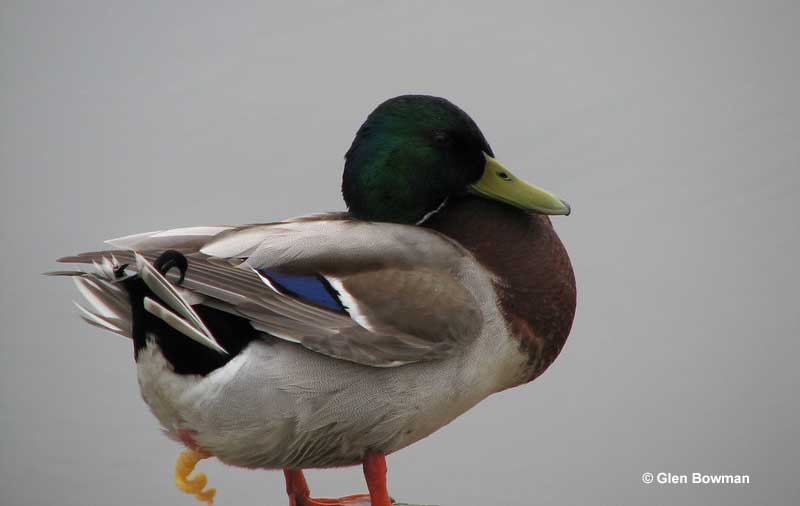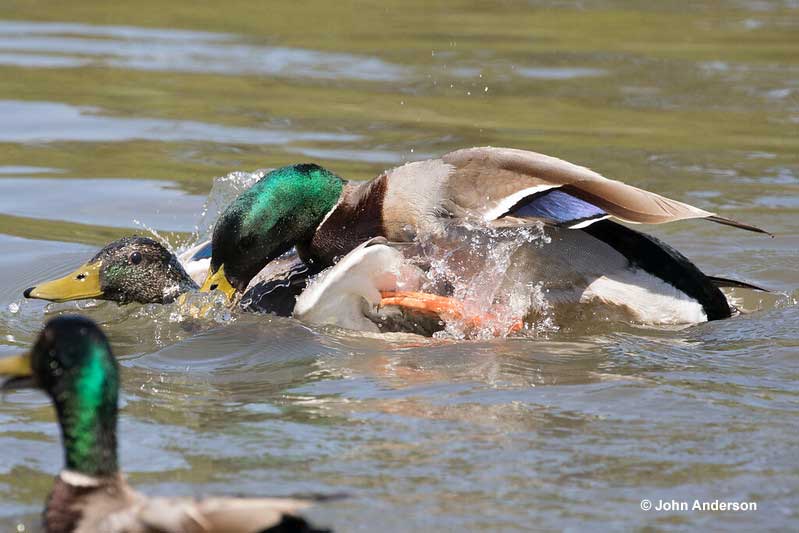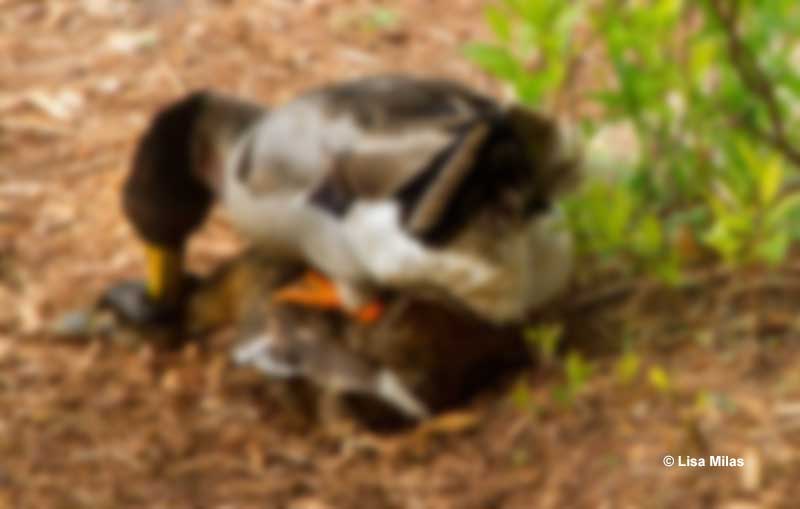
Duck penises have become quite a phenomenon – we see someone mention them, go and search it quickly, and what follows is regret.
With their corkscrew-shaped members and explosive erections, there is just one thing to do – discover more!
What’s so unique about the sexual evolution of waterfowl? Why do these outwardly endearing and clumsy birds have weird sex organs and even weirder sexual behaviors? Let’s take a look.
On this page
What Does A Duck Penis Look Like?
Ducks and other waterfowl are among the mere 3% of birds whose males have penises. All drakes (male ducks) have penises, although shapes and sizes vary slightly among species. Oh, and shapes and sizes are another story.
The duck penis is elongated and twisted – corkscrew-shaped, to be more precise. In its unaroused state, it is flaccid and tucked in the cloaca like a fire hose.
Once the hormones kick in and the duck pair is close to copulation, the penis will swell so swiftly that it will almost shoot out of the drake’s cloaca. It is no wonder since copulation usually lasts only a few seconds, and in many cases, the female is looking to get away ASAP.
The drakes are also (in)famous for their penis length. It varies among species, but in some, the penis is longer than the drake’s body. Argentinian Lake Duck is the record holder, with the longest measured penis of 42.5 cm. In comparison, the entire body length is 36-40-something centimeters.
Interestingly, the duck penis is immense only during the breeding season. When the hormonal peak ends, it shrinks. The shrinkage is so dramatic that it has led to a popular opinion that it falls off before regrowing again in the next breeding season. Also, research revealed that if many competitors surround males, they will grow larger penises in the breeding season.
Female Anatomy
Evolutionists think that it was the shape of the duck vagina that influenced such a strange development of drake genitalia.
Basically, both sexes are at an evolutionary ‘genital war.’ Since drakes can physically overpower the females and forcefully fertilize their eggs, the duck hen’s anatomy evolved to make it ever-harder for the drakes to father the ducklings.
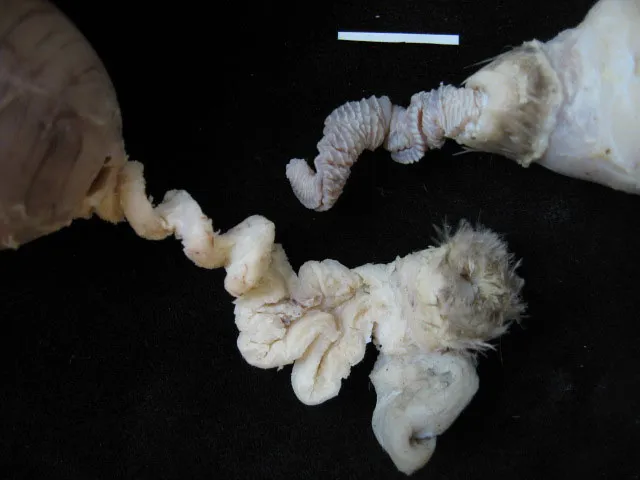
Female anatomy is on the left, and male on the right. Image credit: livescience.com
The duck vagina, or the modified oviduct, is also long and winding, spiraling in the opposite direction of the duck’s penis.
The twists, turns, and dead-end pockets all have one role – to make egg fertilization more tricky and give the duck hen more control over who fathers her clutch.
Although the penis is elongated and often pushed forcefully, the shape of the vagina can control or stop the penetration.
The drake manages to ejaculate as close as possible to the eggs/ovaries and has the biggest theoretical possibility of becoming a father. That evolutionary need has pushed both the anatomy and the behavior of drakes to extremes.
The Infamous Mating of Ducks
Disclaimer
When talking about the often-extreme duck mating, we will avoid using anthropomorphizing expressions like ‘rape’ and (over) emotional attributes like ‘brutal,’ ‘cruel,’ ‘savage,’ etc. While you’ll commonly find these phrases in other articles, it is essentially scientifically incorrect to use them.
Ducks have a completely different sexual evolutionary history from humans. Because of that, we shouldn’t project labels and values from the human world to the bird world – including waterfowl.
After all (luckily?), we don’t have twisted vaginas and giant spiraling members, do we?
How Ducks Mate?
It’s not hard to read all kinds of sadistic impulses into the chaos of duck mating. However, there are biological reasons for what we perceive as violence.
Learn more: How do birds reproduce?
Most (penis-less) male birds mate swiftly and with no aggression involved. The male will briefly mount a female and rub his cloaca against hers.
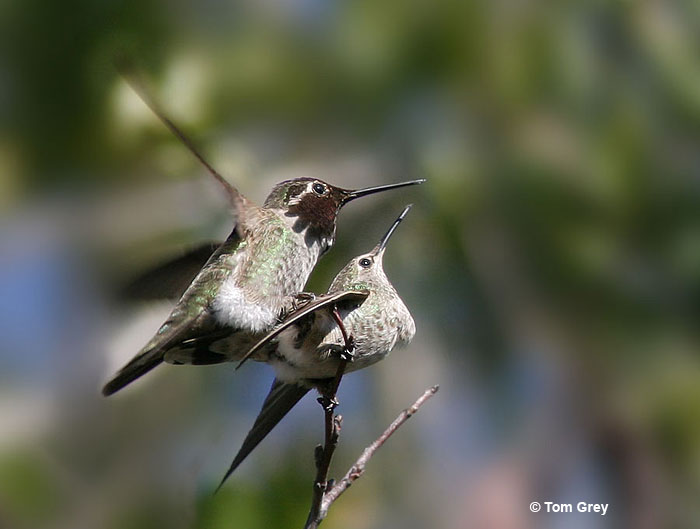
Looks innocent enough, right? Most birds do not have penises, so they reproduce using the ‘cloacal kiss’ – the male hops onto the female’s back, and their cloacas touch for a few seconds.
If she cooperates and positions herself at a right angle, he will likely be the father of these chicks. Additionally, many birds are monogamous, meaning that the female will mate with her chosen partner for the entire breeding season or, in some cases, for life.
On the other hand, ducks are more promiscuous than most other birds or other waterfowl, like swans. Even when they form pairs, these are short-lasting and not as strongly bonded.
Also, most duck populations have more males than females, making females picky and leaving some males at risk of being excluded from the gene pool.
Because of these circumstances, the competition to father ducklings is fierce, leading to the (in the eyes of humans) shocking sexual behavior of drakes.
In mallards, the springtime mating season can turn especially violent because drakes’ testosterone levels spike enormously (there is another smaller peak in the fall). Males high on hormones get triggered when seeing females (the targets) and other males (the competitors), leading to messy displays.
Forced matings with females outside of pair bonds, group matings (many males attacking a single female), female fatalities due to drowning during persistent mounting, male-on-male attempts, and even going at dead partners or rivals are all common occurrences during duck breeding season.
Why Do Ducks Mate So Aggressively?
As said, the mating aggression seems to be correlated with the species’ promiscuity and the competition to father ducklings.
In Ruddy Ducks, for example, no pairs are formed during the breeding season, and almost all copulations are forced. These cute-looking waterfowl also have grotesquely elongated penises, sometimes even longer than their bodies, reflecting the strong competition between males.
The appendage grows longest in the dominant drake and stays that way throughout the season, while the rest of them take a chance at mating in short bursts and hope the boss won’t notice.

Domestic Duck Mating
Domestic ducks also have ‘eccentric’ sexual behavior, usually less dictated by the season and happening almost year-round. Besides female ducks being exposed to forced mating, younger hens can also fall victim to aggressive (and deeply misguided) breeding attempts.
If you are a duck owner, you might be wondering if you should try to curb or stop the sexual aggression of drakes. While there is no sense in scolding drakes for what comes naturally, there are ways you can protect duck hens from harm.
- Have a single drake and as many females as realistically possible. Owning only one drake and at least 4-5 drake hens will decrease mating pressure on individual hens.
- Ensure you have a proper pond on your property. Ducks mating in water are less likely to get hurt.
- If one duck hen seems to be especially pressured by the drake, isolate her from the flock to rest and recuperate.
- If the drake is too pushy, consider separating him from the hens until the end of the breeding season.
Frequently Asked Questions
Can ducks hold sperm?
After mating, duck hens can store sperm for two weeks or even longer. That means they can delay fertilization of the eggs.
Ducks hens can not only hold sperm but also get rid of the sperm they don’t want. Studies have shown that despite forced matings being 20% of all matings in a population, only 2-5% of the ducklings are fathered by drakes pursuing the non-consensual mating strategy.
Can ducks change sex?
Ducks cannot change sex by their own choosing, and that goes for males and females as well. However, some mallards can go through a ‘spontaneous sex reversal’ due to the physical or physiological damage of the sex organs (e.g., ovaries in females).
Although this sex change cannot be complete (that is, sex organs can’t change), the affected ducks will display looks and behaviors of the other sex. In females, male plumage can occur, and vice versa. In biology, the phenomenon is called ‘phenotypic masculinization or feminization.” It means that the ‘sex change’ happens only on the superficial level of secondary sexual characteristics.
People get easily confused about young mallards because both male and female juveniles have the same – and have female coloration. However, the young males do not ‘change’ sex – they’re already biologically male but still haven’t grown their trademark adult plumage and green heads.
How do you know if ducks are mating?
The duck mating is quite obvious – the drake will mount the female while clasping the back of her neck with his bill. His wings quiver as he tries to copulate, but copulation itself is not visible from the outside.
For Mallards who formed couples, there will usually be a short pre-mating ritual in the form of circular swimming and mutual head-bobbing in the water. Most ducks prefer to mate in water due to reduced pressure on the hen’s legs and back.
Are ducks aggressive when mating?
Ducks show various levels of aggression during mating. The male competition and promiscuity of the species dictate the level of aggression. As a general rule, the more males there are in the population and the more promiscuous the lifestyle of the species, the greater the sexual aggression and competition.
What do male ducks do after mating?
If the male duck is pair-bonded with the female, he will fiercely guard the pair’s territory and ‘his’ female from other males. While he’s on guard, she will rest, feed, and prepare for egg laying and incubation. After the female lays eggs, he will start seeking out other mating opportunities until the pairing finally dissolves. The female raises ducklings on her own.
The drakes that have failed to pair up usually pursue the forceful mating strategies. If they succeed in mating, they will continue to seek out other females momentarily.
Can female ducks try to mate with each other?
Female ducks will occasionally mount each other. However, this behavior is not primarily sexual but is a pecking order thing. Mounting and pinning to the ground – which outwardly looks the same as mating – is a way ducks assert dominance over each other.


